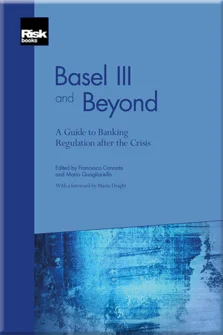The Changing Uses of Contingent Capital under the Basel III Framework
Massimo Libertucci
Foreword
Introduction to 'Basel III and Beyond'
The Big Financial Crisis
The Policy Response: From the G20 Requests to the FSB Roadmap; Working Towards the Proposals of the Basel Committee
The New Definition of Regulatory Capital
A New Framework for the Trading Book
Counterparty Credit Risk and Other Risk-Coverage Measures
Tools for Mitigating the Procyclicality of Financial Regulation
The Regulatory Leverage Ratio
The New Framework for Liquidity Risk
The Discipline of Credit Rating Agencies
Systemically Important Banks
Regulating Remuneration Schemes in Banking
Crisis Management and Resolution
The Impact of the New Regulatory Framework
A Brazilian Perspective on Basel III
A New Institutional Framework for Financial Regulation and Supervision
Structural Regulation Redux: The Volcker Rule
The Changing Uses of Contingent Capital under the Basel III Framework
B.1 Introduction
The Basel III framework places great emphasis on both the quantity and quality of the regulatory capital endowment of banks. The post-crisis experience illustrated that market participants focused primarily on common equity in periods of systemic distress. Nevertheless, it may be the case that different capital instruments can still play a role. Among these instruments, contingent capital – that is, a security that converts into equity when a predefined event occurs11 Because of this feature, contingent convertible (“Coco”) is widely used as a synonym for contingent capital. – has gathered increasing attention. This annex provides an evaluation of the debate among regulators, academics and market participants surrounding the possible implementation of contingent capital under the Basel III framework.
Several variants of contingent capital have been proposed over the years. The post-crisis debate has focused on forms of debt that – more or less automatically – transform to common equity after a given signal is issued – for example, in the form of a given level of a predefined
Copyright Infopro Digital Limited. All rights reserved.
As outlined in our terms and conditions, https://www.infopro-digital.com/terms-and-conditions/subscriptions/ (point 2.4), printing is limited to a single copy.
If you would like to purchase additional rights please email info@risk.net
Copyright Infopro Digital Limited. All rights reserved.
You may share this content using our article tools. As outlined in our terms and conditions, https://www.infopro-digital.com/terms-and-conditions/subscriptions/ (clause 2.4), an Authorised User may only make one copy of the materials for their own personal use. You must also comply with the restrictions in clause 2.5.
If you would like to purchase additional rights please email info@risk.net











